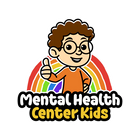|
Key Takeaways:
- ADD is an outdated term for ADHD. They are not separate disorders, and ADD is no longer a formal diagnosis.
- There are three types of ADHD: inattentive, hyperactive/impulsive, and combined.
- The best treatment for ADHD is an individualized plan combining various forms of therapy and medication.
|
If you’re often distracted, restless, and forgetful, you may wonder whether you have ADD. Or is it ADHD? The discussion regarding ADD vs. ADHD is still ongoing, but it’s essential to know the difference.
In this article, you’ll see how this terminology has changed and get a better understanding of what ADHD is today.
What is ADD?
ADD or Attention Deficit Disorder is a now-outdated term once used to describe a condition characterized by inattentiveness, distractibility, and poor working memory. Clinicians first added the term to the DSM-II (Diagnostic and Statistical Manual) in 1980, and individuals could receive a diagnosis of “ADD with hyperactivity” or “ADD without hyperactivity.”
Professionals used the term until 1987, though some people still use the term out of familiarity. The change occurred when a new version of the DSM (fifth edition) was published. Today, ADD is no longer a diagnosable condition.
What is ADHD?
ADHD or Attention-Deficit Hyperactivity Disorder is a neurodevelopmental disorder affecting a person’s ability to pay attention, impulsivity, and hyperactivity. Symptoms of ADHD might include difficulties focusing, trouble sitting still, and struggling to “get in the zone.” These symptoms might be caused by biological and structural differences in the ADHD brain as compared to a “neurotypical” brain.
While most ADHD symptoms begin in early childhood between the ages of three and six, some people don’t get diagnosed until adulthood. According to the CDC, 7 million children in the United States have been diagnosed with ADHD [*].
ADD vs. ADHD
While people sometimes use the terms ADD and ADHD interchangeably, the terminology is no longer the same. ADD is an older term focused on difficulties with attention and impulse control, without mentioning hyperactivity.
Today, the official diagnosis is ADHD, which includes three presentations: inattentive, hyperactive-impulsive, and combined.
This means a child can have ADHD even if they aren’t constantly fidgeting or restless. Parents and caregivers need to understand that children can struggle with attention and focus without showing obvious hyperactive behaviors.
There are many misconceptions surrounding ADD and ADHD, such as that ADD is “less severe” or that people with ADHD are always hyperactive.
Someone who may have been diagnosed with ADD would now likely receive a diagnosis of ADHD, predominantly inattentive presentation.
The 3 Types of ADHD
By today’s definition, there are three ADHD types. A diagnosis will be specific to the following symptoms.
Inattentive ADHD
Those with inattentive ADHD aren’t necessarily hyperactive but may struggle primarily with focus [*]. Someone diagnosed with inattentive ADHD might often “space out” and exhibit the following signs:
- Avoiding long mental tasks like homework or household projects
- Often forgetting things
- Frequently making careless mistakes
- Losing or misplacing things often
- Struggling to follow multi-step tasks
- Seeming not to listen, even when being spoken to directly
Hyperactive and Impulsive ADHD
Hyperactive and impulsive ADHD are easier to notice, as symptoms involve constantly moving or switching between tasks and interests. If a child is under 16, they must display at least six or more of the following symptoms:
- Blurting out responses before another person finishes speaking
- Constantly interrupting others
- Inability to wait for their turn
- Being too talkative
- Fidgeting, tapping, or squirming
- Inability to have quiet time
- Running, climbing, or crawling in inappropriate situations
- Getting up and walking around/away in inappropriate situations
- Always feeling like they’re “on the go”
Combined ADHD
Combined ADHD features symptoms of both inattentive and hyperactive/impulsive ADHD. These shared symptoms might include the following:
- Constant disorganization and forgetfulness
- High distractability
- Difficulties with self-control
- Excessive energy and restlessness
- Emotional dysregulation
These symptoms are often present in at least two settings, such as at home or school. They can also have a profound impact on someone’s social, academic, and family life.
Do ADHD Types Require Different Treatment?
ADHD treatments will vary depending on the type of ADHD a person is diagnosed with. Still, the primary goal is to manage or lessen these symptoms.
While medications are an effective method of treating ADHD, most mental health professionals will recommend therapy first. Behavioral therapy is a core treatment for ADHD, and this may include classroom interventions, parent training, or cognitive-behavioral therapy (CBT) [*]. These therapies aim to improve social skills, attention, organization, and emotion regulation.
Occasionally, a medical professional may recommend medications. These medications help control impulsive behavior, increase attention span, and manage executive dysfunction. There are two types:
-
Stimulants: These medications are the most commonly prescribed for ADHD symptoms, with 70% to 80% of people seeing fewer symptoms after taking them [*]. However, stimulants have some side effects, including stomachaches, headaches, increased blood pressure, and changes in appetite [*].
-
Non-stimulants: While these medications don’t work as quickly as stimulants, they are ideal for people experiencing side effects or not seeing improvements in their symptoms.
Of course, the most effective ADHD treatment is highly individualized. Healthcare professionals must identify a person’s ADHD type and consider their medical history to develop a targeted plan.
For example, someone with inattentive ADHD might benefit from regular talk therapy while integrating visual schedules and timers at home and for schoolwork.
The Bottom Line
While ADD and ADHD refer to the same core disorder, ADD is an outdated term that medical professionals no longer use. ADHD is the current official term, and individuals may present symptoms differently.
If you or your child is living with ADHD, explore our ADHD worksheets for coping skills that work.
Sources:
- “Data and Statistics on ADHD.” Centers for Disease Control and Prevention, 2024.
- Ike, Pan MC, Thai CG, Alisso T. “Attention-Deficit/Hyperactivity Disorder Predominantly Inattentive Subtype/Presentation: Research Progress and Translational Studies.” Brain Sciences, 2020.
- Sulkes SB. “Attention-Deficit/Hyperactivity Disorder (ADHD).” MSD Manual Professional Edition, 2024.
- “Treatment of ADHD.” Centers for Disease Control and Prevention, 2024.
- Stevens JR, Wilens TE, Stern TA. “Using Stimulants for Attention-Deficit/Hyperactivity Disorder.” The Primary Care Companion For CNS Disorders, 2013.





















































